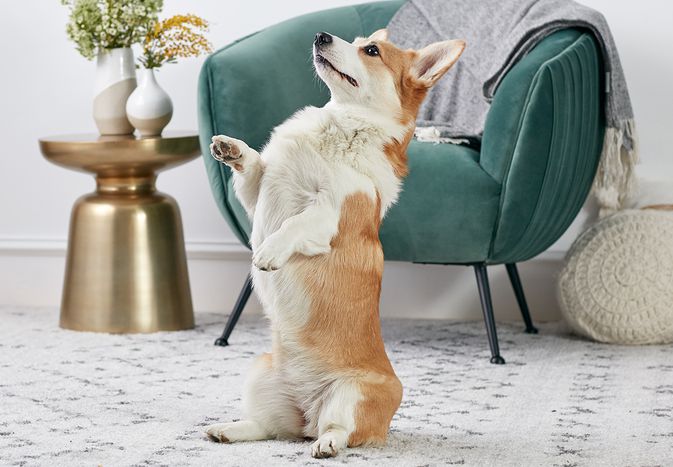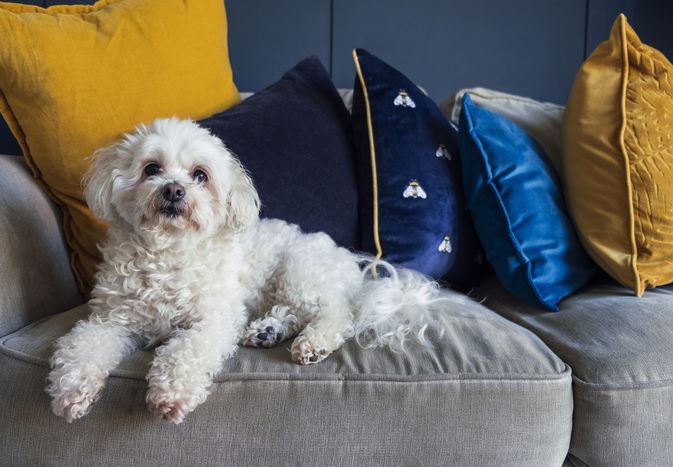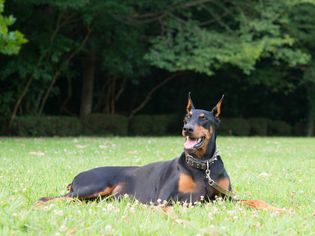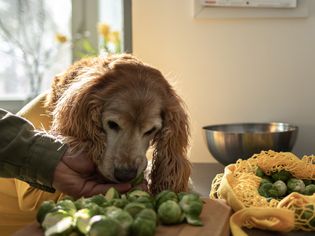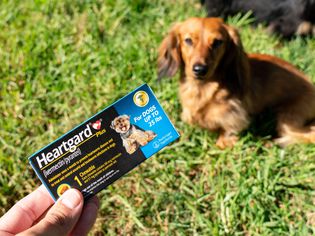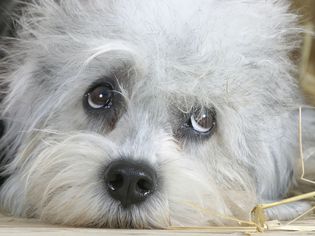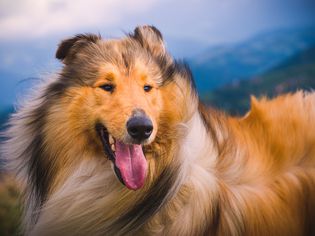Just like people, dogs need regular dental care, but unfortunately, dental hygiene for dogs is sometimes overlooked. Many people seem to just expect dogs to have bad breath, and few people brush their dogs’ teeth frequently enough.
Plaque builds up on the teeth and turns into hard tartar, also called calculus. Plaque and tartar harbor bacteria that eat away at the teeth and gums. Halitosis, periodontal disease, oral pain, and tooth loss can occur. However, the bacteria not only cause disease in the mouth; they can also affect other parts of the body, like the heart and kidneys.
Dental hygiene is just as important to your dog’s overall health as things like nutrition, proper exercise, and routine grooming. There are several things you can do to help keep your dog’s teeth in good shape. Start a dental care routine as early as possible in your dog’s life and stick with it.
Preparing to Care for Your Dog's Teeth
Catching teeth problems early will help avoid severe dental disease. The simplest way to keep track of your dog’s teeth is to look at them on a regular basis and be aware of signs that may indicate a problem. Routine veterinary examinations are also important.
To inspect your dog’s teeth, lift the lips all around the mouth, looking at the front and back teeth as closely as possible. Be gentle and use caution, so you do not startle your dog (and possibly even get bitten, particularly if your dog might be in pain).
Watch for the following signs of teeth problems in your dog:
Symptoms
- Halitosis (bad breath)
- Reluctance to chew or crying out when chewing
- Increased salivation
- Red, puffy, or bleeding gums
- Tartar (calculus), a brown or yellow coating on teeth caused by plaque
- Missing and/or loose teeth
What You Should Consider
- Special toothbrush for dogs
- Dental dog chews
- Dental additives for dog's water
Brush Your Dog's Teeth
Tooth brushing is the best preventive measure related to oral hygiene, and should be done daily to be most effective. Start when your dog is a puppy, and can get used to the feeling of having its teeth brushed. Puppies have 28 deciduous teeth that typically are all in when they are about eight weeks of age, and are then typically replaced by 42 adult (permanent) teeth by about six months of age. By this time, your dog should be on a regular tooth brushing routine.
Specially designed toothbrushes are available, which are well-suited for dogs' teeth and easier to use than those designed for people. Some are shaped like small finger caps, which you can slip over your index finger and rub the dog's teeth with the textured surface. However, any small, soft-bristled toothbrush can work well. Use a toothpaste designed for dogs to maximize the effectiveness of tooth brushing.
Go Beyond Brushing
If you are unable or unwilling to brush your dog's teeth every day or two, look for another option, such as special dental chews or a food/water additive. Not all products are equally effective (and none work as well as tooth brushing), so ask your vet for recommendations.
Dental chews should be easily digestible and size-appropriate. Typically, dental chews need to be given on a daily basis in order to be effective and should be large enough that your dog has to chew on them for a while before swallowing.
Food additives are used on a daily basis as well. If you use water additives, be sure to change the water daily, or per the manufacturer's instructions.
Get Regular Checkups
Your veterinarian will take a look at your dog’s teeth during routine examinations, so make sure you keep up with these. Vet visits should occur every six to twelve months for wellness check-ups. Contact your vet if any mouth problems arise between visits. Even with good home oral hygiene, dogs can benefit from having their teeth professionally cleaned.
As your dog gets older, more frequent veterinary dental cleanings may be required. With increasing age, dogs also become more susceptible to periodontal disease, which can become serious.
If you're not brushing your dog's teeth regularly, and instead relying on chews and additives, be sure to have your veterinarian check closely for any signs of dental disease. Although they are somewhat helpful, dental chews and rinses are usually only partially effective.
How to Prevent Your Dog From Getting Tooth Issues
From time to time, your veterinarian may recommend a professional dental cleaning, which would require general anesthesia. During the procedure, your dog’s teeth and gums will be examined closely for problems. The teeth will then be scaled and polished to slow the redevelopment of tartar.
While some dog groomers may offer a tooth cleaning service, don't expect to get a deep cleaning. They can brush the dog's teeth just like you could at home, but for a thorough, complete cleaning, the teeth need to be cleaned under the gumline. This isn't something that should be done while the dog is awake.
If your dog does have periodontal disease or other dental problems, the vet may need to extract the affected teeth or refer you to an oral surgeon.
Some dogs need dental cleanings one or more times per year, while others can go for a longer period. Be sure to follow your vet’s recommendations.

